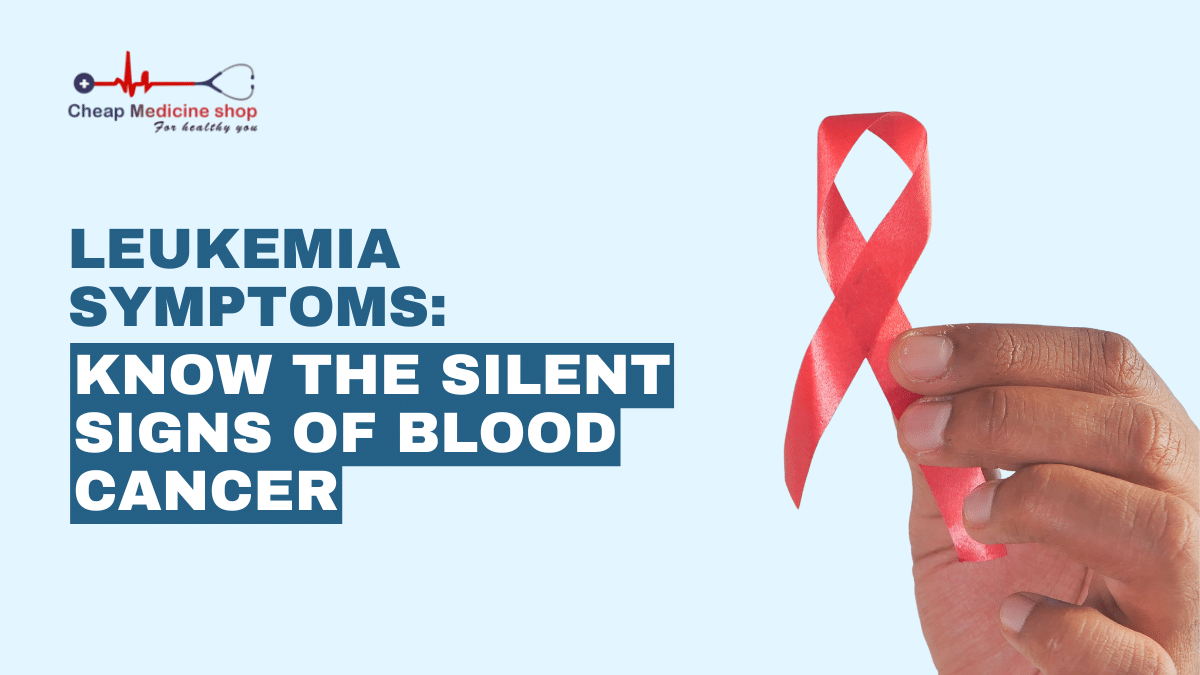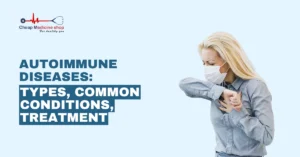Leukemia is a type of Cancer that affects white blood cells, which are an important part of the immune system. When a person has Leukemia, their body starts producing white blood cells that do not function properly. These cells multiply and outnumber healthy blood cells, leading to serious health problems.
Detecting Leukemia early can be life-saving. However, the symptoms often develop slowly and may be confused with common illnesses. This makes it important to understand the early and advanced signs of the disease. In this article, we will read the various Leukemia symptoms in detail and explain why they happen.
Some common Leukemia symptoms
Leukemia is a Cancer of the blood in which the bone marrow produces large numbers of white blood cells that are not normal. These cells don’t fight infection well. They also grow so fast that they outnumber the other normal blood cells. Because of this, the body does not get enough oxygen, can’t fight infections properly, and bruises or bleeds more easily. These problems are what lead to the symptoms of Leukemia.
Save up to 90% on your medicine bills

Abraxane 100 Mg Injection

Alphalan 5 Mg Tablets

Adriamycin 50 Mg Injection

Abirapro 250 Mg Tablet
Fatigue and weakness
One of the earliest and most common symptoms of this Cancer is feeling extremely tired or weak. This happens because the number of healthy red blood cells goes down. When the body doesn’t get enough oxygen through the blood, a person feels tired, no matter how much they rest or sleep.
Frequent infections
Abnormal white blood cells are not good at fighting bacteria and viruses. As a result, people with Leukemia often get infections more easily and take longer to recover. They may have repeated colds, fevers, sore throats, or other infections.
Fever or chills
Low-grade fever is another warning sign. The body might develop a fever as it tries to fight infections caused by the weak immune system. Some people also experience chills or night sweats.
Unexplained weight loss
Sudden weight loss without trying is a symptom that should never be ignored. Leukemia can speed up the body’s metabolism, causing weight loss even when appetite stays the same.
Pale skin (Pallor)
When there are fewer red blood cells, the skin may start to look pale or washed out. This is a sign of anemia, a common problem in Leukemia patients.
Shortness of breath
People with Leukemia may find it hard to breathe even during light activities like walking or climbing stairs. This happens due to anemia, which means the blood cannot carry enough oxygen to the body.
Easy bruising
People with Leukemia may notice bruises on their skin without remembering any injury. This is because their blood has fewer platelets, the cells that help the blood clot.
Frequent nosebleeds or bleeding gums
Unexplained bleeding, such as frequent nosebleeds or bleeding gums while brushing teeth, can be a red flag. Sometimes, even a small injury can cause heavy bleeding.
Petechiae (tiny red spots)
Petechiae are little red or purple spots on the skin, usually on the legs or arms. They are caused by bleeding under the skin due to low platelet counts.
Bone pain
Leukemia cells get built up in the bone marrow, which causes pressure and pain. Some people feel pain in the long bones of the arms and legs or in the joints like knees and elbows.
Swollen lymph nodes
Lymph nodes are small glands that fight infections in the body. Leukemia can cause them to swell. You may feel painless lumps under the skin, often around the neck, armpits, or groin.
Swollen liver or spleen
Some people with Leukemia may feel full quickly when eating or feel discomfort under the ribs. This could be due to an enlarged liver or spleen pressing against the stomach.
Less common symptoms
When Leukemia cells enter the brain or spinal fluid, they can cause:
- Headaches
- Blurred vision
- Dizziness
- Nausea
- Seizures
These symptoms are more likely in advanced stages or certain types of Leukemia, such as acute lymphoblastic Leukemia (ALL).
In some types of Leukemia, like Leukemia cutis, Cancer cells enter the skin. This can cause rashes, bumps, or discolored patches.
Leukemia can sometimes make the gums thick, swollen, and sore. This is more common in certain types, especially Acute Myeloid Leukemia symptoms (AML).
Symptoms in children vs adults
Leukemia symptoms are similar in children and adults, but may appear differently.
Leukemia symptoms in kids include:
- Tiredness and low energy
- Frequent fevers or infections
- Pale skin or dark circles
- Swollen belly or lymph nodes
Children may also stop playing or show less interest in daily activities.
The symptoms of Leukemia in adults include:
- Fatigue and weakness
- Night sweats
- Weight loss
- Frequent infections
- Bone or joint pain
- Shortness of breath
Adults often confuse these signs with other health issues, which can delay diagnosis.
Conclusion
In conclusion, Leukemia is a complex disease with a number of symptoms that can often be mistaken for other illnesses, making early detection challenging. Common signs like fatigue, frequent infections, bruising, and pale skin are often the first to appear, but they may not always be immediately recognized as Leukemia. Other symptoms, like bone pain or swelling in the lymph nodes, can also emerge.
While some individuals may experience a gradual onset of symptoms, others may notice sudden and severe changes in their health. It is important to recognize that Leukemia can present differently in each person, and symptoms may vary depending on the type of Leukemia.
Always consult a doctor if you suspect any unusual or continuous symptoms to make sure timely intervention.

Frequently Asked Questions
Can Leukemia symptoms come and go?
Yes, Leukemia symptoms can fluctuate. They may be mild or absent for periods, but as the disease progresses, symptoms often worsen and become more persistent. The intermittent nature of symptoms can make early diagnosis challenging, requiring careful monitoring.
How long before Leukemia symptoms appear?
The time before Leukemia symptoms appear varies. In some cases, symptoms may develop over weeks or months, while in others, they can appear suddenly. The rate of progression depends on the type of Leukemia and individual factors.
Is a chronic cough a symptom of Leukemia?
Yes, a chronic cough can be a symptom of Leukemia, particularly if the Leukemia affects the lungs or if the immune system is compromised. Coughing may also result from infections, which are common in Leukemia patients due to weakened immunity.
Is thrombocytopenia a symptom of Leukemia?
Yes, thrombocytopenia, a condition where platelet counts are low, is a common symptom of Leukemia. It occurs because the number of abnormal white blood cells gets more than the healthy blood cells in the bone marrow, leading to less platelet production, which increases the risk of bleeding and bruising.
Cheap Medicine Shop only refers to credible, authoritative sources for our content. If you’re curious about how we ensure the integrity of our content, we encourage you to read our Content Information Policy.














